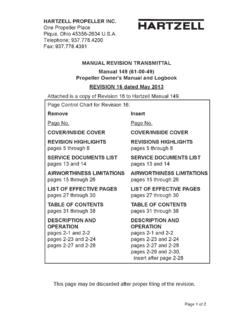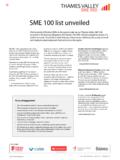Transcription of Dr Johann van der Merwe - Red Meat South Africa
1 Enquiries: Dr Johann van der MerweCell: 073 140 2698 Web: mail: AMT (Pty) Ltd MUTTON OUTLOOK REPORT MARCH 2017 Compiled by Pieter Cornelius E mail: NEXT PUBLICATION August 2017 ALL RIGHTS RESERVED Clients only not for distribution No part of this publication may be reproduced or transmitted in any form or by any means including recording or by any information storage and retrieval system, without permission in writing from AGINFO. Although everything has been done to ensure the accuracy of this information, AGINFO does not take responsibility for the accuracy or the opinions contained in this publication. Results of actions based on this information, will not be the responsibility of AGINFO. AMT (Pty) Ltd 1 INTERNATIONAL SHEEP MEAT TRENDS Australia Australian lamb slaughter is forecast to decline in 2017 on the back of slightly poorer lamb markings and fewer ewes joined, and the result will cascade to lower production and exports.
2 For 2017, lamb slaughter is projected to be 22 million head, down 2% from the estimated 2016 level. While this is a decline year on year, 22 million head is still in line with the long term growth trend observed over the past decade. Breaking the annual processing down to a quarterly basis, it is anticipated that the June and September quarters will be when supplies are the tightest. Lamb availability in the March quarter on the other hand, is likely to benefit from carry over stocks from the final months of 2016, when extremely wet weather delayed many lambs coming to market. Australian lamb production for 2017 is projected to ease 2% to 492,800 tonnes carcase weight (cwt), and like slaughter, while this is a year on year decline, the volume is in the realms of record territory. Breaking down the demand side of the equation, the Australian domestic market is anticipated to remain the largest consumer and account for 48% of production, or 237,000 tonnes cwt, with many encouraging signs coming from the market.
3 For instance, domestic per capita consumption has stabilised in recent years, while at the same time the weighted average retail price has been increasing. To put this in perspective, domestic lamb retail prices in 2016 averaged just 10 shy of the record high set in 2011 , at $ , and per capita consumption is 8% higher now than what it was then. On the export front, Australian lamb shipments are anticipated to ease 4% year on year in 2017, to 220,000 tonnes shipped weight (swt). While there are strong demand signals from the domestic market, internationally, signals are mixed. For instance, the lifting of the government subsidy on imported Australian lamb in Bahrain will likely see reduced volumes to the region continue, while at the same time, the UK pound remains low and US cold store volumes of sheep meat are currently down significantly from year ago levels Similarly, total Chinese sheep meat imports in 2016 were subdued due to high domestic sheep meat production in China, however, domestic production levels are anticipated to be lower next year.
4 The earlier than usual Chinese New Year in 2017 has reportedly spurred demand more recently, with importers already beginning to build up stock levels. In market reports suggest that importers are anticipating good demand for sheep meat during the upcoming cooler months. Taking all these elements into account, the Australian sheep and lamb markets are set to benefit from reduced supplies and the apparent resilience from the domestic consumer. Similarly, while there are mixed signals from the major Australian export markets, there are still many willing to procure Australian product and New Zealand (NZ) lamb and mutton exports seem set to fall further. The result may be a fifth consecutive year of higher year on year prices, or if not, at least levels similar to those of 2016. Prices Looking at recent history, it is encouraging for lamb producers that the market remained high in 2014 and 2015, despite Australian sheep meat production exceeding 700,000 tonnes cwt.
5 In 2016, prices have been assisted by a 6% year on year fall in sheep meat production. On the supply front, expectations are for Australian sheep meat production to lower again next year, which should instil confidence for producers. This, together with a strong domestic market and some recovery in China s demand, as well as in the US and the Middle East, should result in further rises in Australian lamb prices which will make the fifth consecutive year. However, factors to keep an eye on are the significant price difference between Australian and NZ lamb prices. While NZ lamb production has been trending lower, the absence of a large domestic market has led to significantly lower prices than here in Australia, increasing competitive pressures from that market. While this is a factor that needs to be monitored, the major limitation for NZ is production levels, which are expected to decline in 2017. Another risk is that, with Australian domestic retail prices approaching previous record highs, there may again be consumer resistance and a resultant lamb price correction.
6 However, the difference this time is that the A$ and production are likely to decline, supporting prices, whereas following the previous record prices, both rose. MLA will continue to monitor production and trade developments, and the 2017 update will be released in April 2017. MLA Australian Sheep, Industry Projections 2017, January 2017 AMT (Pty) Ltd 2 The domestic Mutton Industry Imports of Mutton meat Figure 1 illustrates the relationship between imports and local prices. Imports are based on carcass equivalent. Imports from Namibia are only available till November and overseas till December 2016. The import of mutton from overseas in the month of December 2016 by 64,0% compared to the previous month and was 29,5% less than the same month in 2015. The import of mutton from Namibia in the month of November 2016 was 172,0% more compared to the previous month and 170,6% more year on year.
7 It seems that import parity price was the main driver in the volume mutton imported from overseas in the period January 2001 to December 2016, with a correlation value of r = 0,6666 followed by the producer price of Class C2/C3 with a correlation of 0,6199. In December 2016 year on year, the import parity price of Australian mutton increased in total by 24,0% and was 3,2% higher compared to the average price of Class C2/C3. Outlook In December 2016 year on year, the South African Rand appreciated in total by 6,5% against the Australian dollar and looking at the performance of the South African economy in the first two months of 2017, the Rand may maintain its relative strong position in the months to come. After the above normal rainfall in the summer grain producing areas of South Africa , a bumper maize crop is expected which will firstly eliminate further imports of maize from May onwards and secondly will earned South Africa foreign currency due to exports, which will stimulate the growth rate of the South African economy.
8 The prediction is therefore that the imports of mutton from overseas may increase in the months to come. Fig. 1 RELATION BETWEEN IMPORTS AND PRICES FOR MUTTON 8501 3501 8502 3502 8503 3503 8504 3504 8505 350 Dec-13 Apr-14 Aug-14 Dec-14 Apr-15 Aug-15 Dec-15 Apr-16 Aug-16 Dec-16c/kg 01 0002 0003 000 TonImports overseas (tons)NamibiaImport parity (NZ mutton)Producer price Class CAMT AMT (Pty) Ltd 3 Fig. 2 NATIONAL SHEEP HERD ('000)20 00022 00024 00026 00028 00030 0002001 2002 2003 2004 2005 2006 2007 2008 2009 2010 2011 2012 2013 2014 2015 Sheep numbersProduction trends Source: DAFF Based on the latest information from the National Department of Agriculture, total sheep numbers, which exclude goats, are in the order of 24,06 million in 2015 which is 0,4% lower than in 2014 (Figure 2). Outlook Notwithstanding the favourable wool and meat prices of the past three years, the high occurrence of organized theft of sheep in South Africa , sheep numbers in South Africa , the present drought is expected to have a negative effect on sheep numbers in 2016.
9 Table 1 Sheep per province Province 2014 2015% of total in 2015 Western Cape 2 810 505281259211,7 Northern Cape 6 017 374601248825,0 Free State 4 784 7474767 12019,8 Eastern Cape 7 015 162702281729,1 KwaZulu Natal 755 1717377643,1 Mpumalanga 1 761 11017389087,2 Limpopo 256 9662542271,1 Gauteng 98 369 1005540,4 North West 642 9556492102,7 TOTAL 24 164 59824 097428100 Table 2 shows the number of sheep being stolen over the period 2005/6 to 2010/11. Table 2 Sheep being stolen Year stolen Stolen RecoveredLost 2005/6 109 3682596383 405 2006/7 116 0583101685 052 2007/8 113 3913123082 161 2008/9 116 3992854987 850 2009/10 127 6472967297 975 2010/11 127 46728 61998 848 2011 /12 94 450 23 56970 881 2012/13 89 100 20 67968 721 Source: RPO AMT (Pty) Ltd 4 Since 2012/13, no more information is available on sheep theft. Theft of sheep in the producing areas is one of the main factors that have a negative effect on the growth of the national herd over the past years from 2005/06 to 2009/10, but since 2009/10 to 2012/13, a decline occurred in the number of sheep being stolen.
10 In 2012/13 the number of sheep stolen decline in total by 5,7% compared to the previous year, and 30,2% compared to 2009/10. Trends in the slaughter of sheep Fig 3 INDEX OF MONTHLY LAMB & MUTTON SLAUGHTER AND PRODUCER PRICE608010 012 014 016 0Fe b- 14 Ma y-1 4 A ug- 14 N ov- 14 Feb - 15 M ay- 15 Au g- 15 N o v-1 5 Feb- 16 M ay- 16 A ug- 1 6 Nov- 16 Fe b- 17 Ind exSlaughterPrice (Class A2/A3)Base period: Average price Jul 2013 to Ju l 2016 = 100 Aggregate slaughter Information received from of Red Meat levy Admin only available till December 2016 with preliminary slaughter based on information from the Red Meat Abattoir Association for January and February 2017. For the month of January and February we have to rely on percentage change in the total slaughter of the approximately 20 abattoirs which provide the information for the price In February 2017 the number of mutton and lamb slaughtered was 2,6% less compared to the previous month, 8,4% more than in February 2016 and 2,7% less than the average over the period February 2014 to February 2017.












